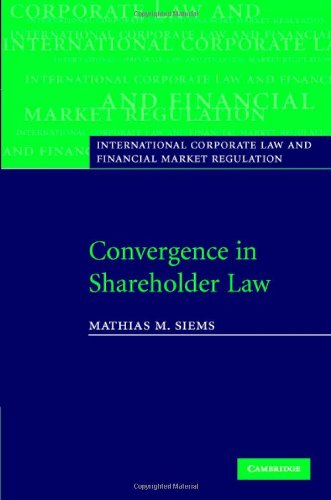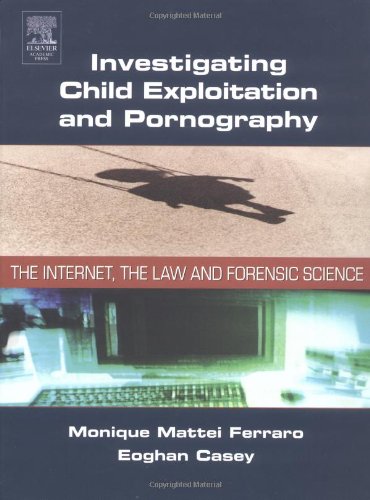Mathias M. Siems0521876753, 9780521876759, 9780511394553
Table of contents :
Cover……Page 1
Half-title……Page 3
Series-title……Page 4
Title……Page 5
Copyright……Page 6
Contents……Page 7
Preface and acknowledgments……Page 11
Abbreviations……Page 12
United Kingdom……Page 21
United States……Page 22
Germany……Page 23
Other countries……Page 24
European Union……Page 25
United Kingdom……Page 30
Germany……Page 37
France……Page 42
Japan……Page 46
China……Page 49
Introduction……Page 53
Part I The object and course of the investigation……Page 57
I. The spatial dimension: the legal systems covered……Page 59
1. Demarcation from shareholders in ‘small companies’……Page 62
2. Demarcation from other participants in the firm……Page 67
1. ‘The End of History for Corporate Law’?……Page 69
2. Historical interconnectedness in Europe……Page 70
3. Receptions in the US, Japan and China……Page 71
b) Japan……Page 72
c) China……Page 74
1. Variants of convergence……Page 75
3. Shareholder law as the core of the study……Page 77
V. Summary……Page 78
Part II The status quo of convergence……Page 81
1. International law……Page 83
2. Regional law……Page 84
II. Statute law and case law……Page 86
III. Company and securities law……Page 89
1. Comparative overview……Page 90
2. Conclusions……Page 95
1. Articles of association……Page 97
2. Shareholder agreements……Page 106
3. Corporate governance codes……Page 108
V. Conclusion……Page 111
1. The shareholder as ‘owner’ or ‘quasi-partner’……Page 112
2. The shareholder as ‘member of an association’ or ‘parliamentarian’……Page 114
3. The shareholder as ‘investor’ or ‘bystander’……Page 115
II. Real types of shareholder……Page 116
III. Conclusions……Page 118
I. The profit-oriented shareholder……Page 120
1. Limited liability……Page 121
a) Legal bases for profit distribution……Page 123
b) Provisions on the amount of dividend……Page 124
c) Dividend practice……Page 127
a) Permissibility of trading in shares……Page 129
b) The influence of statutory provisions……Page 130
c) Agreed selling restrictions……Page 132
d) Practical difficulties……Page 134
4. Share buybacks……Page 136
5. Conclusions……Page 138
a) The different types of shareholder……Page 139
b) The ‘rational apathy’ of shareholders……Page 141
2. Modes of shareholder voting……Page 143
a) Shareholder influence on convocation and agenda……Page 144
b) Timely information on the general meeting……Page 148
c) Voting in advance……Page 153
d) Conclusion……Page 159
a) The right to attend and to speak……Page 161
b) The voting right……Page 165
c) Participation of institutional investors……Page 170
5. Conclusion……Page 172
III. The informed shareholder……Page 173
a) The right to demand information……Page 174
b) Rights of inspection……Page 177
c) Conclusion……Page 178
a) Convergence in law……Page 179
b) Reservations……Page 181
c) Conclusion……Page 182
a) Regulatory philosophies……Page 183
b) Convergence……Page 184
c) Prospects……Page 186
4. Conclusion……Page 188
IV. The anonymous shareholder……Page 189
a) Reasons for the success of the registered share……Page 190
b) Anonymity vis-`a-vis fellow shareholders……Page 192
2. Anonymity of the bearer shareholder……Page 194
3. Anonymity of the ‘spurious’ shareholder……Page 195
4. Anonymity of the influential shareholder……Page 198
5. Conclusions……Page 199
V. Conclusions to this chapter……Page 200
5 The shareholder in the power structure of the company……Page 202
a) Legal bases……Page 203
b) Decisions on conduct of business……Page 205
c) Regular decisions……Page 208
d) Fundamental changes……Page 213
f) Conclusions……Page 220
a) Relative, absolute and qualified majorities……Page 222
b) Cumulative voting rights……Page 225
3. Conclusion……Page 226
1. Protection against management……Page 227
a) The ranking of shareholder interests……Page 228
b) Oversight of management……Page 244
2. Protection against the shareholder majority……Page 252
a) Voting in case of special interests……Page 253
b) Substantive control of decisions……Page 255
c) Leaving the company……Page 259
d) Conclusion……Page 263
III. The litigating shareholder……Page 264
1. Actions against management conduct……Page 266
2. Actions against resolutions of the general meeting……Page 272
3. Conclusions……Page 275
IV. Conclusions to this chapter……Page 276
I. Divergence and convergence……Page 278
II. Globalization and Americanization……Page 280
III. Convergence and artificial convergence……Page 282
Part III Developmental trends and patterns……Page 283
1. The causality problem……Page 285
a) Voters, parties and politicians……Page 288
b) Problems of application……Page 289
3. The influence of interest groups……Page 290
4. Conclusion……Page 292
1. Multinational firms and national law……Page 293
2. Internationalization……Page 294
3. Regionalization……Page 296
1. Statute and case law……Page 298
2. Company and securities law……Page 299
3. Corporate governance codes……Page 301
IV. Conclusions to this chapter……Page 302
1. ‘Clash’ or ‘convergence’ of cultures……Page 304
2. ‘TINA’ or ‘THEMBA’……Page 307
1. The importance of legal culture……Page 309
a) Civil and common law……Page 310
b) Western and Asian law……Page 312
c) Conclusion……Page 316
1. International economic law……Page 317
2. Internationalization through ‘new media’……Page 320
3. The internationalization of private institutions……Page 321
a) International mergers……Page 322
b) Foreign investors……Page 324
c) Exchange listings abroad……Page 325
d) Enterprise culture……Page 330
a) The role of law and politics……Page 331
b) The role of private law-making and individualism……Page 334
2. The decline in concentrated shareholder structures……Page 335
a) Features to date……Page 336
b) Current developments……Page 339
3. The influence of institutional investors……Page 342
1. Reform and reception……Page 344
2. Path dependencies……Page 347
b) Strong path dependencies……Page 348
3. Conclusion……Page 350
1. Regulatory competition……Page 351
a) Supply……Page 352
b) Demand……Page 357
c) Conclusion……Page 360
II. Pressure from management……Page 361
a) Supply……Page 364
b) Demand……Page 365
2. Other forms of pressure……Page 367
IV. Pressure from other interest groups……Page 368
V. Pressure from international organizations and foreign states……Page 370
VI. Legislative responses……Page 371
1. Competition for the seat of companies……Page 372
a) The position in the US……Page 373
b) The position in the European Union……Page 375
c) Divergence and convergence……Page 376
a) International lobbying……Page 377
b) National lobbying……Page 378
a) The evolutionary position……Page 381
b) Limits to convergence……Page 383
c) Conclusion……Page 388
4. Conclusions……Page 389
I. The ‘shareholder as such’……Page 390
1. The profit-oriented shareholder……Page 391
2. The modern shareholder……Page 392
a) The international shareholder……Page 393
b) The delegating shareholder……Page 397
c) The information-seeking shareholder……Page 400
d) The postmodern shareholder……Page 402
e) Conclusions……Page 406
II. The shareholder in the power structure of the company……Page 407
1. The deciding shareholder……Page 408
a) Protection against management……Page 410
b) Protection against the shareholder majority……Page 414
3. The litigating shareholder……Page 416
4. Conclusions……Page 418
I. Re-regulation……Page 420
II. Convergence forces……Page 421
III. Changes in future law……Page 422
Part IV Conclusion……Page 425
1. Reasons for unification of law……Page 427
a) Uniform law……Page 429
b) Means towards convergence ‘from above’……Page 431
3. Interim finding……Page 434
1. National legislators……Page 435
a) Regulatory competition……Page 436
b) Convergence through lobbying……Page 438
2. Case law……Page 440
3. Self-regulation……Page 441
1. The powerless shareholder?……Page 445
3. The empowered shareholder……Page 447
IV. Conclusion……Page 449
13 Summary of principal findings……Page 450
References……Page 455
Index……Page 505







Reviews
There are no reviews yet.